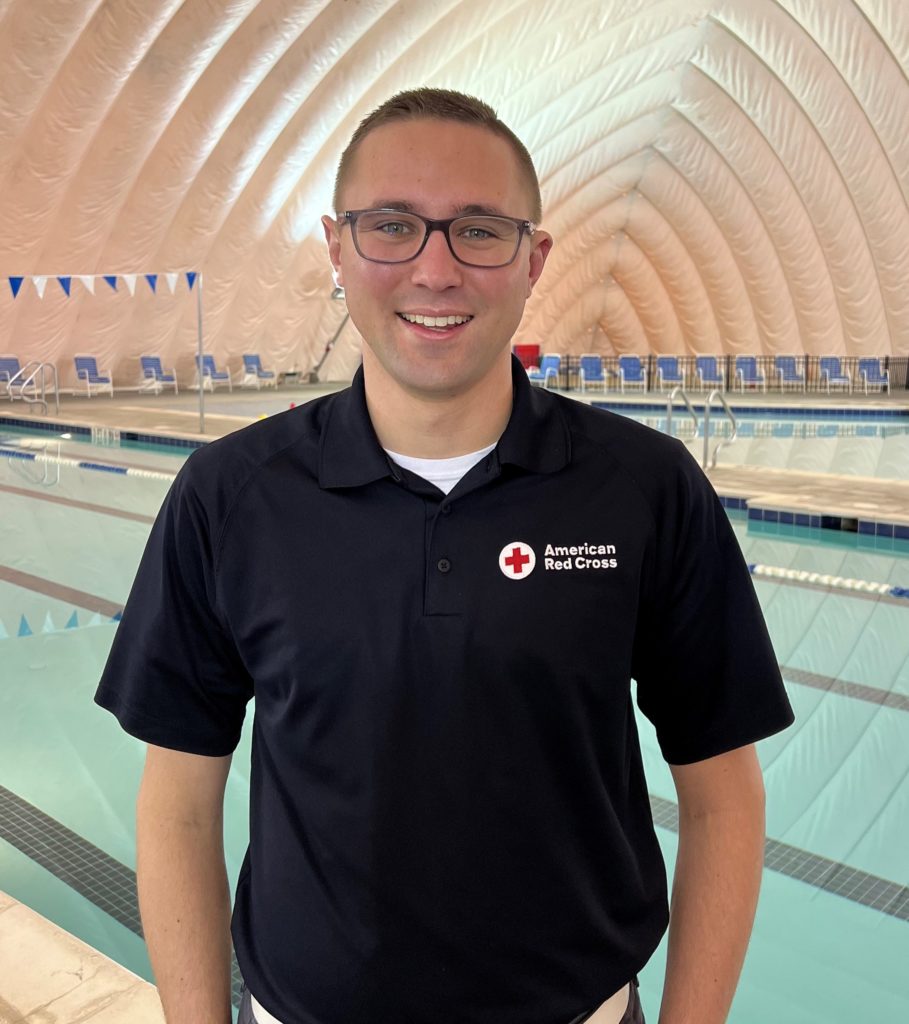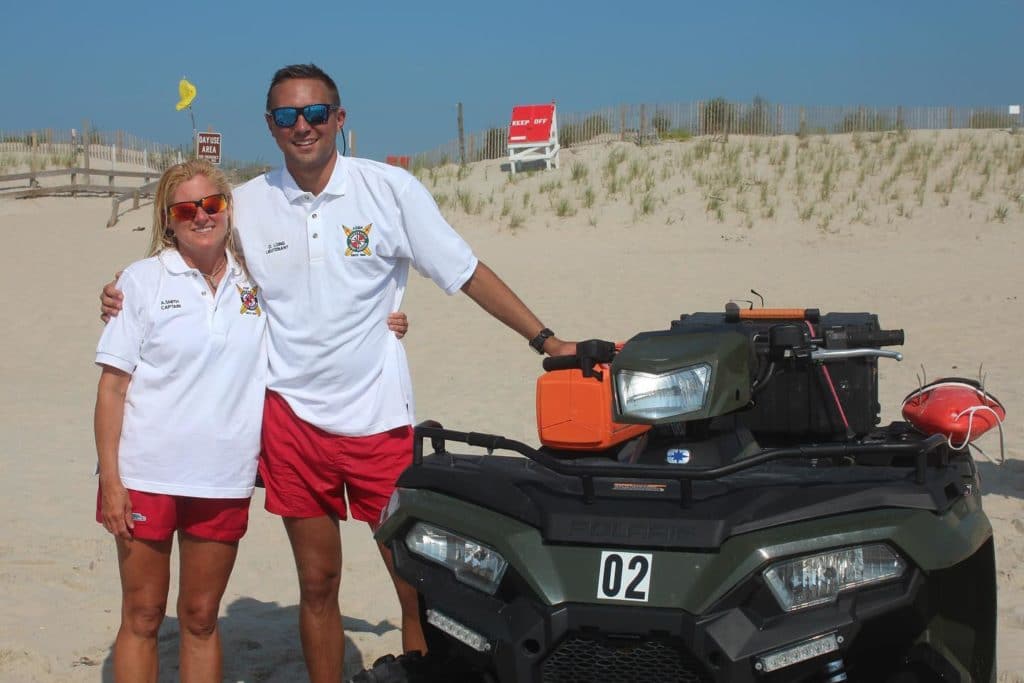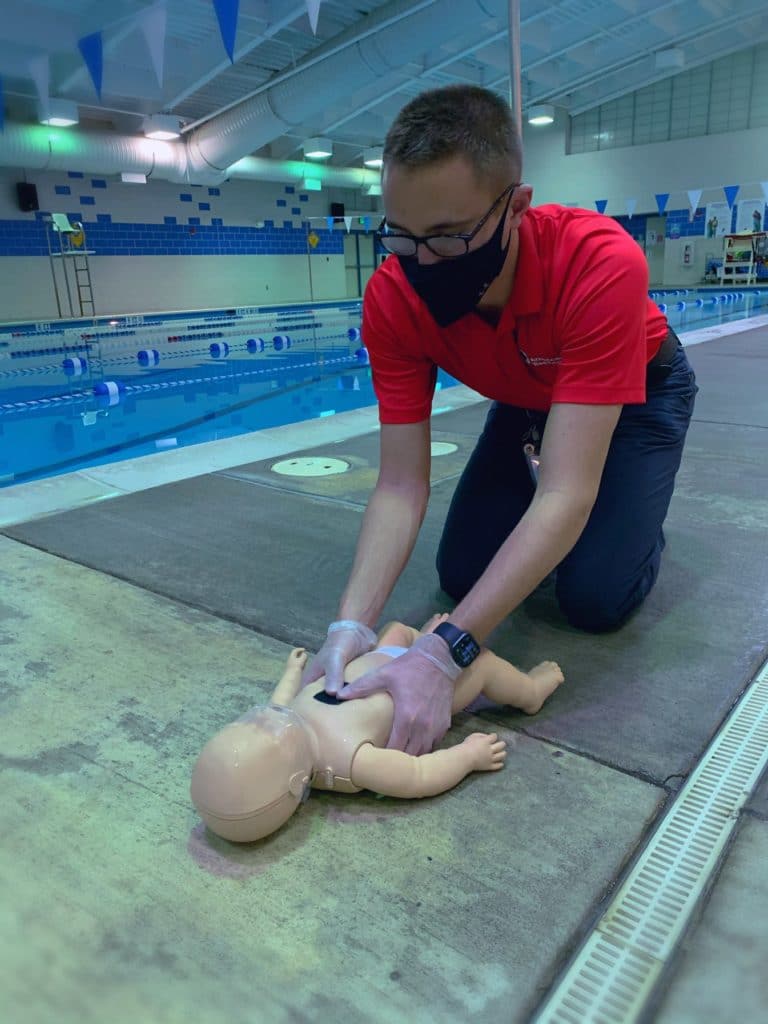
What’s my reason for learning and training others in lifesaving skills? Picture this, you’re standing in line at the grocery store when you hear someone calling “help, help.” It’s a person yelling from the aisle, standing next to someone who has just collapsed onto the floor. The person on the floor is your neighbor, who isn’t breathing and is unconscious.
This is one simple example of how cardiac arrest can happen anywhere, at any time, to anyone. If not quickly recognized, it will end in death. American Red Cross training provides everyone with the knowledge and skills necessary to recognize and promptly respond to an emergency. Notice, how I say everyone. Yes, everyone should get trained, and here’s why:
- Recognizing an emergency allows for a quick response. This can be as simple as calling 911, controlling bleeding with available resources, providing CPR, or knowing how to use an AED. As simple as it sounds, knowing how to recognize an emergency can undoubtedly help save or sustain a person’s life.
- Practice makes perfect. By attending in-person training, students can practice skills such as performing compressions, delivering ventilations, applying sterile dressings, and more, in a controlled environment. By having this opportunity to practice the skills prior to ever having to perform them in real-time, students can learn and feel the correct way to provide care.
- Providing care can be stressful. Red Cross training discusses the importance of recovery for the person who provided care, in addition to the person who received the care. Continued follow-up during the recovery process in the form of rehabilitation, therapy and support from family and healthcare providers is essential. Knowing how to cope with this stress is a valuable skill that is learned from training.
How I got started
When I was 13 years old, I enrolled in a Red Cross First Aid/CPR/AED course, as part of my middle school physical education requirement. During this course, I felt like everything I was learning was something I could apply to everyday life. I began to develop an interest in providing emergency care and wanted to further my first responder training.

At age 15, I became a Red Cross certified Lifeguard. Then, I became a First Aid/CPR/AED and Lifeguarding Instructor, and eventually an Emergency Medical Technician. My passion for providing these skills was seemingly superseded by my love of teaching other people how to perform these skills. There is just something about watching people understand the skill and be able to apply it to a scenario without needing to be coached on what to do. It is even more rewarding to hear from participants, sometimes long after taking the training, that they were able to use their skills in real life.
Why You Should Get Trained
Becoming a Red Cross Instructor is a rewarding experience for all involved. You have the direct opportunity to make an immediate difference in your community. Going back to the person that collapsed in the grocery store, by becoming a trainer, YOU can provide those bystanders with the knowledge and skills necessary to recognize this emergency situation, respond with urgency, and ultimately, educate them on the necessary steps to recover from the experience. YOU can influence saving or sustaining a person’s life – in your immediate surroundings and beyond. By becoming a Red Cross Instructor, you can help others not feel helpless when their neighbor collapses or a loved one seems ill, and be able to train people around you on how to provide first aid – whenever, wherever it is needed.

How to Get Started
If you are interested in becoming an instructor, get started with your training by visiting redcross.org/training. You can become a trainer, leader, and advocate in your community and help others not feel helpless when an emergency arises. No matter your interest or focus, the Red Cross offers a variety of instructor training, such as First Aid/CPR/AED, Lifeguarding, Basic Life Support, Emergency Medical Response, Babysitting, and more. But one helpful tip, be sure to take the required prerequisite training for the instructor course you’re enrolling in.
Training others to feel comfortable in providing immediate first aid care during an emergency is my reason why, what’s yours?
